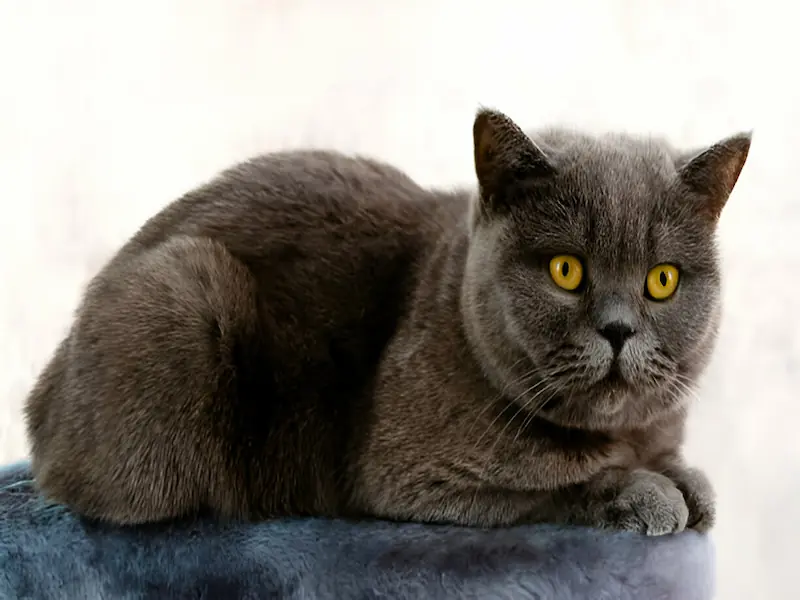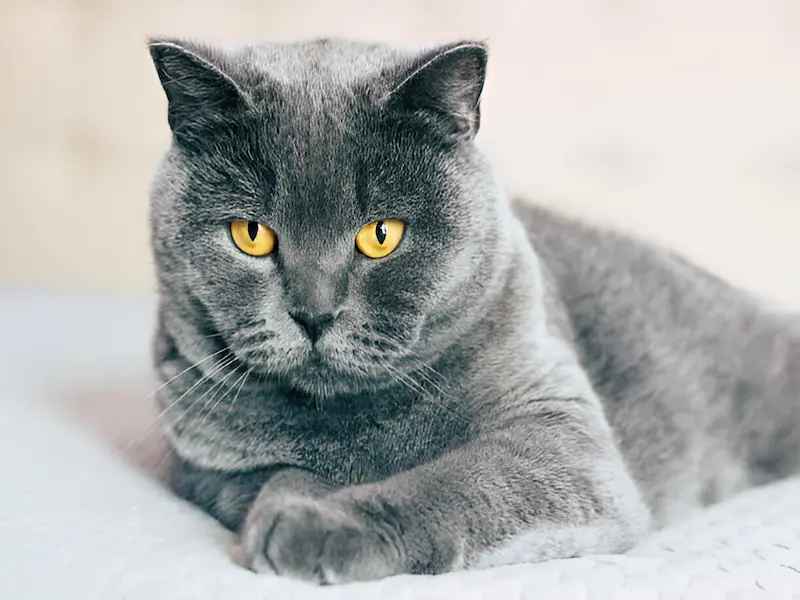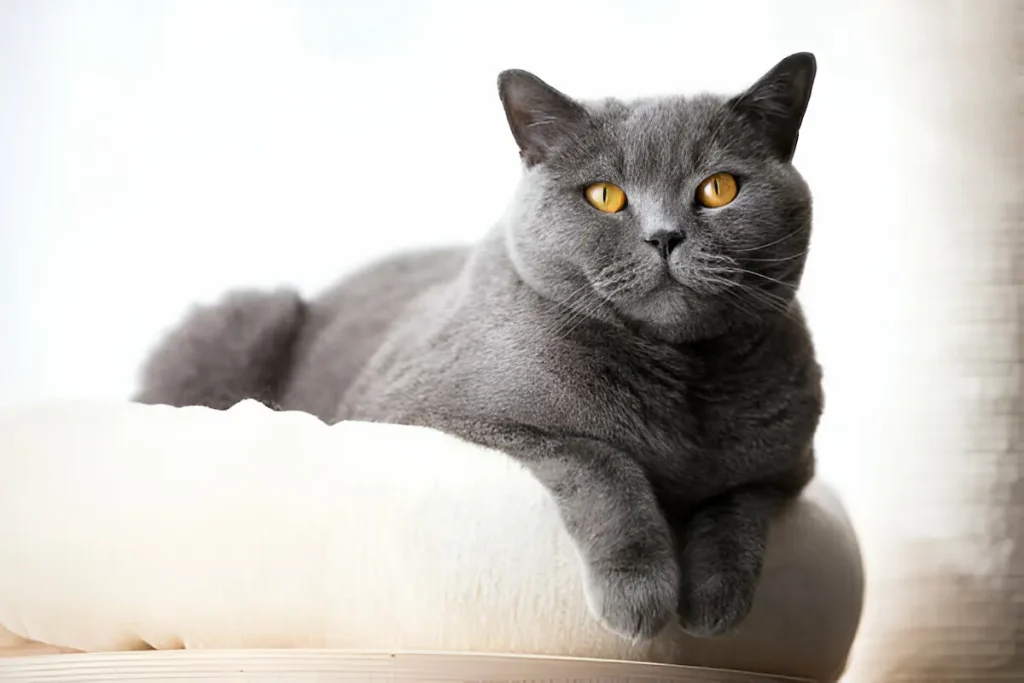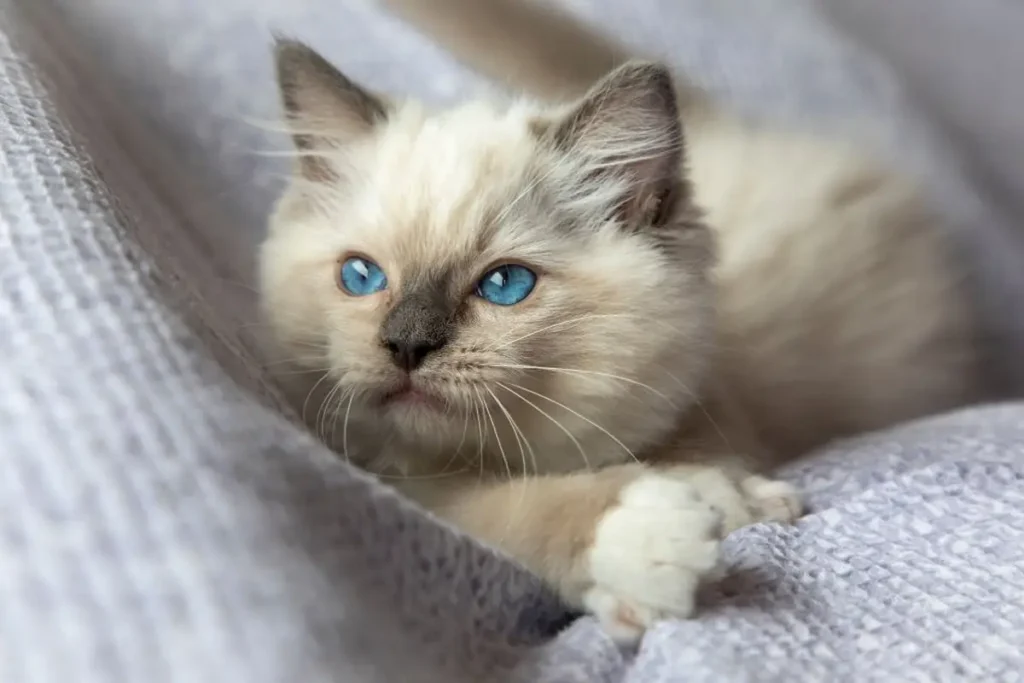Cat lovers have been delighted by the British Shorthair cat for years, as this breed has an attractive appearance and a relaxed temperament. Thanks to its unique round face and fluffy fur, this breed has quickly risen to the most famous cats in the world.
Whether you’re looking for a cuddly companion or a low-maintenance pet, the British Shorthair kitten is sure to exceed your expectations and become a popular member of the family.
Breed Personality Overview

The British Shorthair cat is slow to mature both physically and mentally. These cats generally do not reach their final size and weight until the age of 3 to 5 years. British Shorthair cats may continue to show the energy and playfulness of a kitten until maturity, but once fully grown, this breed is calm and well-behaved.
They are affectionate without being needy and are accepting of strangers, although they might be a little reserved until you get to know them better. British Shorthairs make wonderful companions for gentle, thoughtful children and get along well with other friendly pets.
pros
- Quiet and relaxed
- Affectionate, but not needy
- Gets along well with children and other pets
cons
- The short coat sheds moderately
- Does not like to be held or worn
- He should not be left alone for many hours a day
Related: Are Siamese cats hypoallergenic? Find out the truth!
History of the British Shorthair Cat

The British Shorthair may be the oldest cat breed in the UK. The most accepted theory about the development of this breed is that the British Shorthair began as short-haired street cats, but breeders refined and standardized the cats, probably crossing them with Persian and Russian Blue cats until they resembled the British Shorthair we know and love today. British shorthair cats were among the breeds exhibited at the first cat show held in England in 1871.
At that time, the breed was called “British Blue” because blue (gray) was a very common color in the breed early on. Although short British blue hair is still popular today, it comes in many different colors and patterns.
The breed was first introduced to the United States in the early 20th century, but there they were called domestic shorthairs. The British Shorthair breed was officially recognized by the Cat Fanciers Association in 1980. Today this popular breed can be found throughout the world.
Appearance of the British blue cat
The British Shorthair is a medium to large, compact, and stocky cat known for its attractive features and thick, soft fur.
Short and stocky, the British Shorthair cat is instantly recognizable by its round face and large round eyes which give this cat a charming expression and lots of character.
Personality of the British blue cat
The affectionate, playful, and loyal British Shorthair cat is a very sociable cat when it comes to family and close friends, although, like many other cats, it needs some time to get used to strangers. A relatively calm and surprisingly sociable cat, the British Shorthair gets along well with multi-cat households and also makes friends with other pets, especially cats-loving dogs.
Characteristics of the British Short-haired cat

The British Shorthair is a large cat – not as massive as the Maine Coon or Siberian cat – but some males can weigh up to 17 pounds (females usually weigh 12 pounds or less). They make wonderful family cats: the breed has an easy-going disposition and generally gets along well with anyone, including children and other animals living in the home. British Shorthair is active without being exaggerated, tends to be calm, and can live happily in almost any size of home, including apartments.
Nutrition and nutrition
Every cat is unique and each has their own likes, dislikes, and needs when it comes to food. However, cats are carnivores and each cat must get 41 different and specific nutrients through its diet.
The proportion of these nutrients varies based on age, lifestyle, and general health. Therefore, it is not surprising that a growing, high-energy British Blue kitten needs a different nutritional balance in its diet than a less active older cat.
Other considerations to consider include feeding the right amount of food to maintain an “ideal body condition” according to the Nutrition Guidelines and considering individual preferences for wet or dry food recipes.
Common Health Problems
British Shorthair is a particularly healthy breed and rarely affected by genetic diseases. Among genetic diseases, they are more susceptible to heart disease, especially hypertrophic cardiomyopathy.
Of course, any cat can get sick, injured, or develop a health condition. For this reason, it is important to visit the vet for a physical exam at least once a year to ensure that your cat is healthy and to keep track of any developing health problems.
British Shorthair Cat Care
Although it is a short-haired cat, the British Shorthair has a very dense coat. Weekly combing helps remove dead hair and serves as a good control for parasites or lesions. Doing a quick grooming regularly can help you understand if a cat is unwell. One of the first signs is often a greasy coat that the cat can’t reach or the feeling that he doesn’t feel well enough to make his usual efforts.
Trim your nails every two to three weeks and check the inside of your ears weekly. If you see small debris in your ears, clean your ears with a pet ear cleaner and cotton balls (never with a cotton ball). If your British Shorthair’s ears look red or excessively dirty, make an appointment with your vet.
British shorthair cats are playful into adulthood but are not exaggerated or overly active. You can get enough exercise by exploring the house and playing with them several times a day.
Engage your British Shorthair with feather sticks, toy mice, and other favorite toys. Make sure your cat has enough things to climb and sit on, such as scratching posts, cat-friendly bookcases, and cat apartments. Even by scratching, cats can find exercise and occupation.
Set up several acceptable scratching spots inside your home, including vertical scratching posts (such as tall posts or scratching posts) and horizontal scratching posts (such as cardboard or Sisal scratching posts placed on the ground).
FAQs
Is A British Shorthair a good breed?
British Shorthair is an excellent companion for families with or without children. The personality of the British Shorthair cat brings together the best of all feline personalities; when well-socialized as young kittens, they are friendly and affectionate, but also independent and contented.
Why is British Shorthair expensive?
British shorthair cats are known for being extremely easy to care for, although they will occasionally bring you gifts (ahem, dead mice), as they were bred to do just that. Because they are popular worldwide, breeders charge more for these cats.
Is A British Shorthair a natural breed?
Over the centuries, their naturally isolated offspring have evolved into decidedly large and robust cats with short but very thick fur to better withstand the conditions of their islands of origin. According to artists’ renderings, the modern British Shorthair is unchanged from this original type.
What is special about the British Shorthair cat?
British Shorthairs are simple, gentle cats who love to build a bond with their owner. They are well-mannered, calm, cool, and collected – and extremely loyal. Their tolerant nature makes them great companions for families with small children and other pets.
Are British cats friendly?
The affectionate, playful, and loyal British Shorthair cat is a very sociable cat when it comes to family and close friends, although, like many other cats, it can take a while to get used to strangers.
How expensive is a British Shorthair cat?
In general, a purebred British shorthair cat costs between $1,000 and $3,500.



